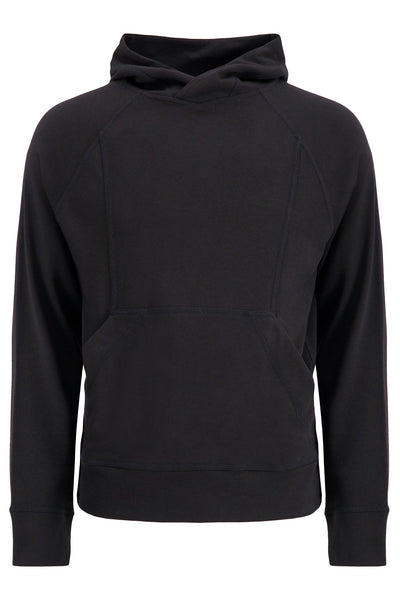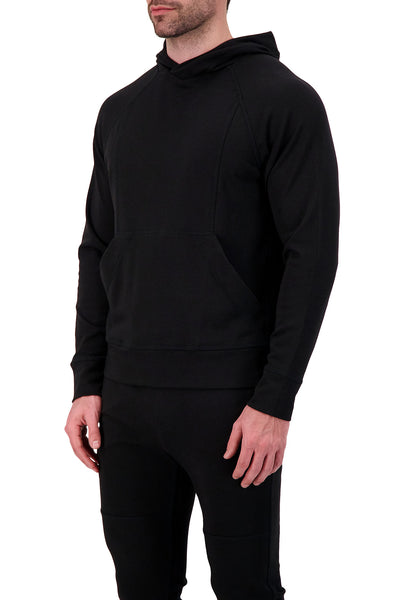Cold-weather camping can be an exciting and adventurous experience, but it also presents unique challenges. With the right knowledge and preparation, you can ensure that you stay warm and comfortable throughout your trip. In this article, we will discuss five essential tips for staying warm while cold weather camping.
Understanding the Challenges of Cold Weather Camping
Before we dive into the tips, it's important to understand the challenges that cold-weather camping presents. Cold temperatures can lower your body's core temperature and increase the risk of hypothermia. Additionally, the lack of sunlight and harsh conditions can make it difficult to stay warm. By understanding these challenges, you can take the necessary precautions to stay safe and comfortable.
Cold-weather camping is an exhilarating adventure that allows you to experience the beauty of nature uniquely. However, it also comes with its fair share of challenges. The biting cold can penetrate through multiple layers of clothing, leaving you shivering and longing for warmth. The gusts of wind can feel like icy daggers against your skin, making it hard to find solace in the great outdoors. But fear not, with the right knowledge and preparation, you can conquer these challenges and have a memorable camping experience.
The Importance of Staying Warm
Staying warm is crucial when cold weather camping. Not only does it ensure your comfort, but it also helps prevent hypothermia and other cold-related illnesses. When your body gets too cold, it can harm your circulation, heart rate, and overall well-being. Make sure you prioritize staying warm throughout your trip.
One of the key ways to stay warm is by layering your clothing. Layering allows you to trap warm air between each layer, providing insulation and keeping you cozy. Start with a base layer made of moisture-wicking material to keep sweat away from your body. Add a mid-layer made of insulating material like fleece or down to provide warmth. Finally, top it off with a waterproof and windproof outer layer to protect you from the elements.
Common Mistakes to Avoid
Many campers make common mistakes that compromise their warmth while camping in cold weather. One of the most common mistakes is wearing cotton clothing. Cotton absorbs moisture and takes a long time to dry, which can make you feel cold and damp. Instead, opt for moisture-wicking and insulating materials like wool or synthetic fibers.
Another mistake is not properly insulating your sleeping bag. Your sleeping bag is your primary defense against the cold, so make sure it's well-insulated and rated for the expected temperatures. Consider investing in a sleeping bag liner for extra warmth. Additionally, avoid sleeping directly on the ground as it can sap the warmth from your body. Use a sleeping pad or mattress for insulation.
When it comes to food and hydration, many campers overlook the importance of staying warm. Eating high-calorie meals and staying hydrated can help fuel your body's internal furnace and generate heat. Pack nutrient-dense foods like nuts, dried fruits, and energy bars. Don't forget to drink plenty of water, even if you don't feel thirsty, as dehydration can increase your susceptibility to the cold.
Lastly, don't forget about your extremities. Your fingers, toes, and ears are particularly vulnerable to the cold. Invest in good-quality gloves, socks, and a hat to keep these areas well-insulated. Consider using hand and foot warmers for an extra boost of heat.

Preparing for Your Cold Weather Camping Trip
Proper preparation is key to staying warm while cold weather camping. Here are two essential steps to prepare for your trip:
Choosing the Right Camping Gear
Investing in the right camping gear is crucial for staying warm in cold weather. Look for a four-season tent that is designed to withstand harsh conditions and has proper insulation. A well-insulated tent will help trap heat and keep the cold air out.
When choosing a tent, consider factors such as its size, weight, and ease of setup. You want a tent that provides enough space for you and your camping gear but also one that is lightweight and easy to carry. Look for tents with sturdy poles and strong rainflies to ensure stability and protection against the elements.
In addition to a quality tent, you'll need a sleeping bag that is rated for lower temperatures than you expect to encounter. This will provide an extra layer of insulation and ensure that you stay warm throughout the night. Look for sleeping bags with features like draft collars, hood cinches, and draft tubes to prevent cold air from seeping in.
Don't forget to bring appropriate winter clothing, including insulated jackets, hats, gloves, and socks. Layering is key to staying warm, so pack base layers made of moisture-wicking materials, insulating mid-layers, and waterproof outer layers. Consider bringing extra clothing in case of unexpected weather changes.
Planning Your Meals and Hydration
Proper nutrition and hydration play a vital role in staying warm. In cold weather, your body requires more energy to generate heat, so plan your meals accordingly. Opt for high-calorie and nutrient-dense foods that provide long-lasting energy. Pack plenty of snacks and hot beverages to keep you warm and fueled throughout the day.
When planning your meals, consider the cooking methods available to you. In cold weather, it may be more challenging to cook over an open fire, so bring a camping stove or a portable grill. Plan meals that are easy to prepare and require minimal cleanup, as you'll want to conserve energy and stay warm.
Hydration is equally important. It's easy to overlook hydration in cold weather, but the dry air and increased activity can lead to dehydration. Make sure you drink plenty of water and hot liquids to stay hydrated and maintain body temperature. Consider bringing a thermos filled with hot water or soup to keep you warm from the inside out.
Remember to pack water purification methods, such as water filters or purification tablets, in case you need to source water from natural sources. Avoid drinking untreated water, as it may contain harmful bacteria or parasites.
Lastly, don't forget to pack a first aid kit specifically tailored for cold-weather camping. Include items such as blister pads, pain relievers, and cold and flu medication. It's better to be prepared for any unexpected injuries or illnesses that may arise during your trip.
Essential Tips for Staying Warm
Now that you're prepared for your cold-weather camping trip, let's explore some essential tips for staying warm:
Dressing in Layers
One of the most effective ways to stay warm is by dressing in layers. Layering allows you to adjust your clothing to regulate body temperature. Start with a moisture-wicking baselayer to keep sweat away from your skin. This layer is crucial as it helps to prevent moisture from cooling against your body, which can lead to discomfort and even hypothermia in extreme conditions.

Next, add an insulating layer, such as a fleece or down jacket, for warmth. These materials provide excellent insulation by trapping air close to your body, creating a barrier against the cold. Fleece is lightweight and breathable, making it a popular choice among outdoor enthusiasts. On the other hand, down jackets are known for their exceptional warmth-to-weight ratio, making them ideal for cold-weather camping.
Finally, top it off with a waterproof and windproof outer layer to protect you from the elements. This layer acts as a shield against rain, snow, and wind, preventing them from penetrating your clothing and chilling you to the bone. Look for jackets made with waterproof and breathable materials, such as Gore-Tex, to ensure maximum comfort and protection.
Maximizing Tent Insulation
Properly insulating your tent is essential for staying warm. Use a groundsheet or tarp underneath your tent to prevent heat loss from the ground. The ground can absorb and drain your body heat, so adding an extra layer between you and the cold ground can make a significant difference in your comfort level.
Seal any gaps or openings in your tent to keep the cold air out. Even the smallest gaps can let in drafts, making it harder to maintain a warm environment inside the tent. Check the seams, zippers, and windows for any potential areas where cold air might sneak in. Consider using a tent repair kit to fix any minor issues before your camping trip.
Additionally, consider using a tent heater as a supplementary heat source, but make sure to follow the manufacturer's instructions and use it safely. Tent heaters can provide extra warmth during extremely cold nights, but it's crucial to ensure proper ventilation and avoid any fire hazards. Always keep a close eye on the heater and never leave it unattended.
Utilizing Heat Packs
Heat packs are a convenient and effective way to stay warm while camping. They provide instant heat and can be used in your sleeping bag, pockets, or gloves. Invest in hand warmers, foot warmers, and body warmers to keep you comfortable throughout the night and during outdoor activities.
Hand warmers are small packets that generate heat when exposed to air. They are perfect for keeping your hands warm during chilly mornings or evenings. Foot warmers are designed to fit inside your shoes or boots, providing warmth to your feet, which are often the first to get cold. Bodywarmers are larger heat packs that can be placed in your sleeping bag or against your body for long-lasting warmth.
When using heat packs, always read the instructions carefully and follow the recommended usage guidelines. Some heat packs are disposable, while others can be reactivated by boiling them in water. Make sure to dispose of used heat packs properly and never puncture or open them.
Safety Measures to Consider
Staying safe is just as important as staying warm during your cold-weather camping trip. Here are two safety measures to consider:
Recognizing Hypothermia Signs
Hypothermia is a serious condition that occurs when your body loses heat faster than it can produce it. It can be life-threatening if left untreated. Learn to recognize the signs of hypothermia, such as shivering, confusion, drowsiness, and loss of coordination. If you or anyone in your group starts showing these symptoms, take immediate action to warm them up and seek medical attention if necessary.
Emergency Procedures and Equipment
Prepare for emergencies by familiarizing yourself with basic first aid techniques and carrying a first aid kit. Additionally, have a plan in place for communication and know the emergency procedures for your camping area. Consider carrying a portable weather radio to stay updated on weather conditions and any potential hazards.
Making the Most of Your Cold Weather Camping Experience
While staying warm is important, it's equally important to enjoy your cold-weather camping experience. Here are two ways to make the most of it:
Enjoying Winter Camping Activities
Winter camping offers unique opportunities for outdoor activities. Embrace the cold by going ice fishing, snowshoeing, or cross-country skiing. These activities will not only keep you warm through physical exertion but also allow you to appreciate the beauty of nature in winter.
Embracing the Beauty of Winter Camping
Winter camping presents a unique and breathtaking landscape. Take the time to enjoy the beauty of nature covered in snow and ice. Capture stunning photographs and create lasting memories. Remember, the cold weather shouldn't deter you from exploring and appreciating the wonders of winter camping.
Conclusion
Staying warm while cold weather camping is crucial for your comfort and safety. By understanding the challenges, properly preparing, and following these essential tips, you can enjoy a memorable cold-weather camping experience. Remember to prioritize warmth, stay safe, and make the most of the unique opportunities that winter camping presents. Happy camping!














